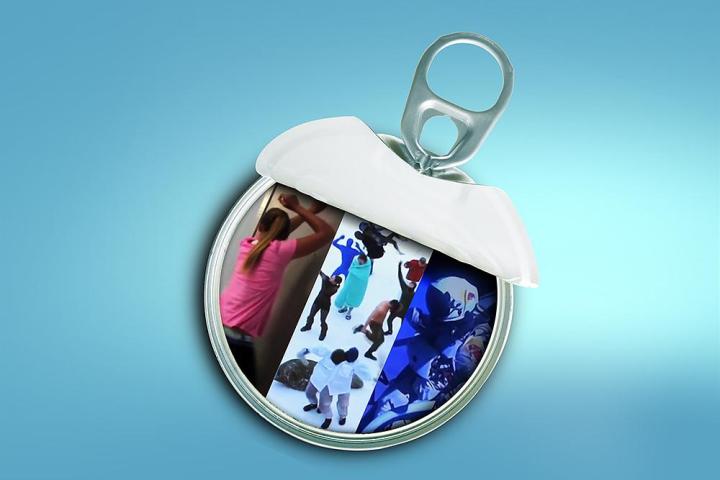
Last week, I happened across a video on Reddit of something glorious: A crazy son-of-a-bitch losing his mind on a guy playing a trumpet on the sidewalk. The freakout dialog is superb. The man – at least I think it’s a man – is perhaps the most perfect embodiment of a Web troll I’ve ever seen in the offline world. It’s great – Grade A Internet, apparently shot by an amateur who captured a serendipitous moment of random insanity.
(Warning: NSFW language)
The video is also, it seems, one of a dying breed: Viral content that has no link to corporate backers.
Anyone who’s worked in online media has heard someone – usually someone on the money side of the business – say something along the lines of, “Okay, how do we make this go viral?” Or just, “Alright, let’s make this go viral!” That is, of course, a ridiculous statement. You can’t just make something go viral. There’s no serum to pour into the Web’s water supply, infecting users with the need to share your content. Content either goes viral or it doesn’t. Right?
We were duped into believing that the footage was authentic.
Not anymore. Take a recent viral video to spread into all echelons of the online world: “Worst Twerk Fail EVER.” As we all now know, that poignant bit of Internet awesomeness was actually not a hilariously private fail, serendipitously caught on camera and released into the wild. It was, instead, produced by the anchor of ABC’s late night programming, “Jimmy Kimmel Live.”
The sharing of “Twerk Girl” was real – it racked up more than 16 million views on YouTube. We believed we were seeing actual footage of a cute college girl who really was dumb enough to twerk upside down on her front door within falling distance of a glass table covered in a lit candle and flammable booze. Had we known it was a professional stunt woman catching on fire, choreographed by Jimmy Kimmel, the video would more likely have been seen as a mildly amusing skit, as opposed to one of those “You’re not going to believe this!” moments that we often feel compelled to share.
In other words, Kimmel found a strategy that works. Yes, a certain bit of luck was involved. But the secret formula for achieving virality has clearly been cracked. The suits have won the viral Web game – or are at least getting closer to the finish line.
Other instances show that the key to making something go viral isn’t deception and faked “fails,” but simply corporate participation in memes. Early this year, for example, the Web became saturated with “Harlem Shake” videos. But, as Quartz reports, the popularity of this online phenomenon of silliness wasn’t due primarily to the public’s love of seeing people dancing like wackos. It was the fact that a hipster inside joke was identified by some enormous brands, including Facebook and Google, that were looking to ride social media momentum in the wake of Oreo and Tide doing the same thing so successfully during the Super Bowl black out a week before.
The corporatization of the meme has accelerated further this year, with highly popular content being explicitly produced by companies as another form of advertisement. The highest profile example of this may be balls-of-steel daredevil Felix Baumgartner’s record-breaking skydive from space, which resurfaced this week as an uncut POV video that has garnered more than 3 million views on YouTube in just a few days – all of which was, more or less, an ad for Red Bull. Less visible examples can be found on a ballooning number of websites like BuzzFeed (and Digital Trends) in the form of “sponsored content” – articles, videos, photos and more created for the sole purpose of spreading a brand’s message.
As the marketers get increasingly savvy, they’ll increasingly influence what “popular” culture is online.
As more and more of this sponsored content proliferates online, we’re not simply at risk of being tricked into thinking we’re seeing something “real,” although that may turn off some people. The larger issue is a fundamental shift in what the Web is. For most of its life, the Web as a massively distributed and democratic publishing platform has significantly outweighed the Web as a marketing platform. As the marketers get increasingly savvy, they’ll increasingly influence what “popular” culture is online.
The flip side to this, of course, is that Web companies need money to survive and thrive. Selling banner ads alone isn’t cutting it any more, so sponsored content has arrived to fill the need for revenue. Without sponsored content as a revenue option, who knows how many online companies would be forced to shutter their servers.
At the end of the day, this evolution of a Web by and for the people to a Web by the corporations for the people to share, is surely inevitable. The Internet is still young. And the money men are still trying to figure out how to keep this thing afloat.
My only hope is that we will still have videos of crazy troll people losing their minds without viewers having to wonder if some advertising guy is off screen, pulling all the strings.


